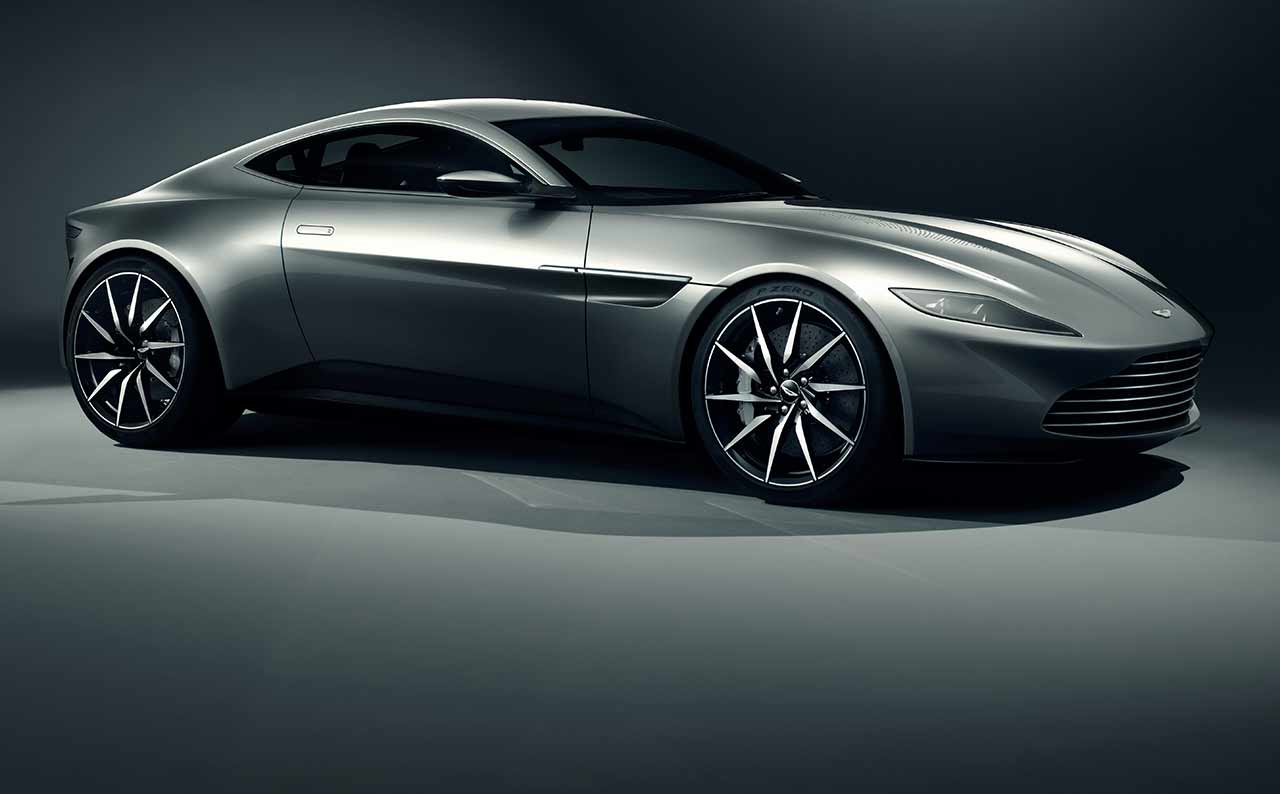Mistaken identity, robbery, misinformation, missed opportunities: no, it's not storyline from the recently pinched script for the 24th James Bond film Spectre. Instead it's the long, often glorious but sometimes troubled tale of the Aston Martins that are the cars 007 is most associated with.
The DB5 Sean Connery drives in Goldfinger might be the best known – perhaps the best-known film car of all time – but the story starts long before that, with a very different Aston Martin that has a mystery of its own.
'DB III' and DB4GT Zagato: the ones that got away
It all started in 1959 with the publication of Ian Fleming's seventh Bond book, Goldfinger. Bond is offered a choice of cars in the Universal Exports motor pool, and turns down a Jaguar 2.4 in favour of what Fleming calls a 'DB III'. The only problem with that is the Aston Martin DB III doesn't exist.
There are two cars Fleming might have meant. The first is the DB3, a sports-racing car designed in 1951 by Robert Eberan von Eberhorst, of pre-war Auto Union Grand Prix car fame. The DB3 put the proven DB2 engine into a lightweight twin-tube chassis with a simple open-top body, the idea being to make a lighter, faster and better-handling race car. But the DB3 took a long time to appear, and when it finally did it proved to be only a little lighter than a race-spec DB2, and it couldn't compete with the lighter, more powerful Jaguar C-types. It was replaced in 1953 by the smaller, lighter DB3S, which was altogether more successful.
It's unlikely Fleming wanted Bond to be driving a racing car, so the car he probably meant is more correctly called the DB Mark III. Like the DB3, it owes its origins to the DB2 road car of 1949.
The original DB2 was a two-seater, but a four-seat DB2/4 version arrived in 1953, followed by a DB2/4 Mark II in 1955. Big revisions came in 1957, with new front-end styling based on the DB3S and a heavily modified engine. In theory it was a 'DB2/4 Mark III' but that was too much of a mouthful, and it was usually just called the DB Mark III. It was this car, ultimately with a 214bhp 3.0-litre engine and disc brakes, which was the mainstay of Aston Martin production until the DB4 came along in 1958.
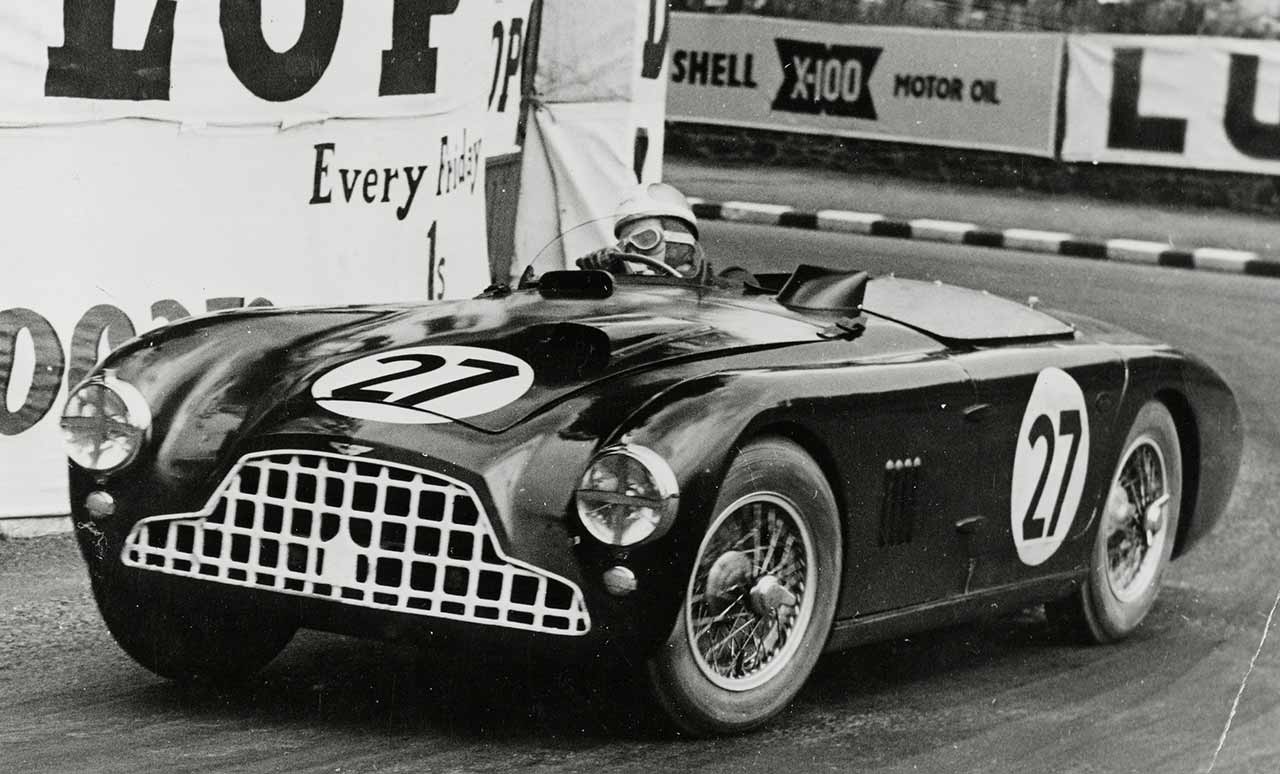
DB3 (above) and DB4GT Zagato (below) were out of production by the time production started on Goldfinger Aston Martin
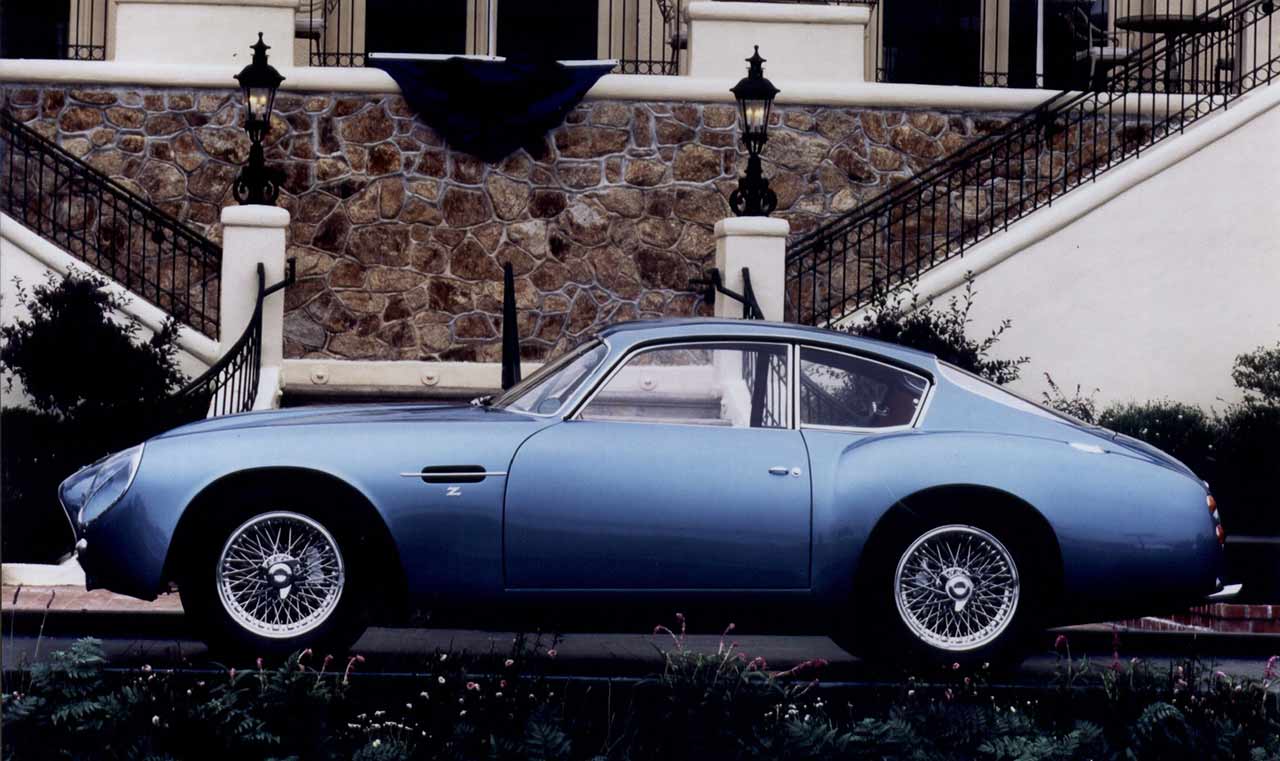
DB5: Bond's first film Aston
By the time work started on the Goldfinger film the DB Mark III was out of production, and the special effects supervisor John Stears and production designer Ken Adam wanted something more modern. The Aston they had in mind was the rare, brutish DB4GT Zagato, but when Stears approached Aston Martin and explained the gadgets they wanted to fit to the car, Aston Martin weren't impressed.
The whole Bond/Aston Martin partnership nearly fizzled out right there.
Eventually Aston Martin agreed to lend the Eon Productions two of its latest production model, the DB5. At least, that's what it would look like – but one of the cars wasn't a DB5 at all...
DP216/1 was a DB4 Vantage which had been the prototype for the DB5 (hence the DP – Development Project – chassis number). It was a well-used car that Aston was happy to cut up to incorporate all the gadgetry, which included concealed machine guns, battering rams, and the now-famous ejector seat. Goldfinger director Guy Hamilton wished his car had revolving number plates so he could avoid parking tickets, and that soon found its way onto the Aston, but not every idea made it: flame throwers and an automatic cocktail shaker never got beyond the drawing board.
Alongside this "effects" car Aston supplied a regular production DB5 in Silver Birch, which became known as "the road car". It was registered FMP7B, but during filming both cars carried DP216/1's registration, BMT216A. DP216/1, which was originally red, was resprayed to match.
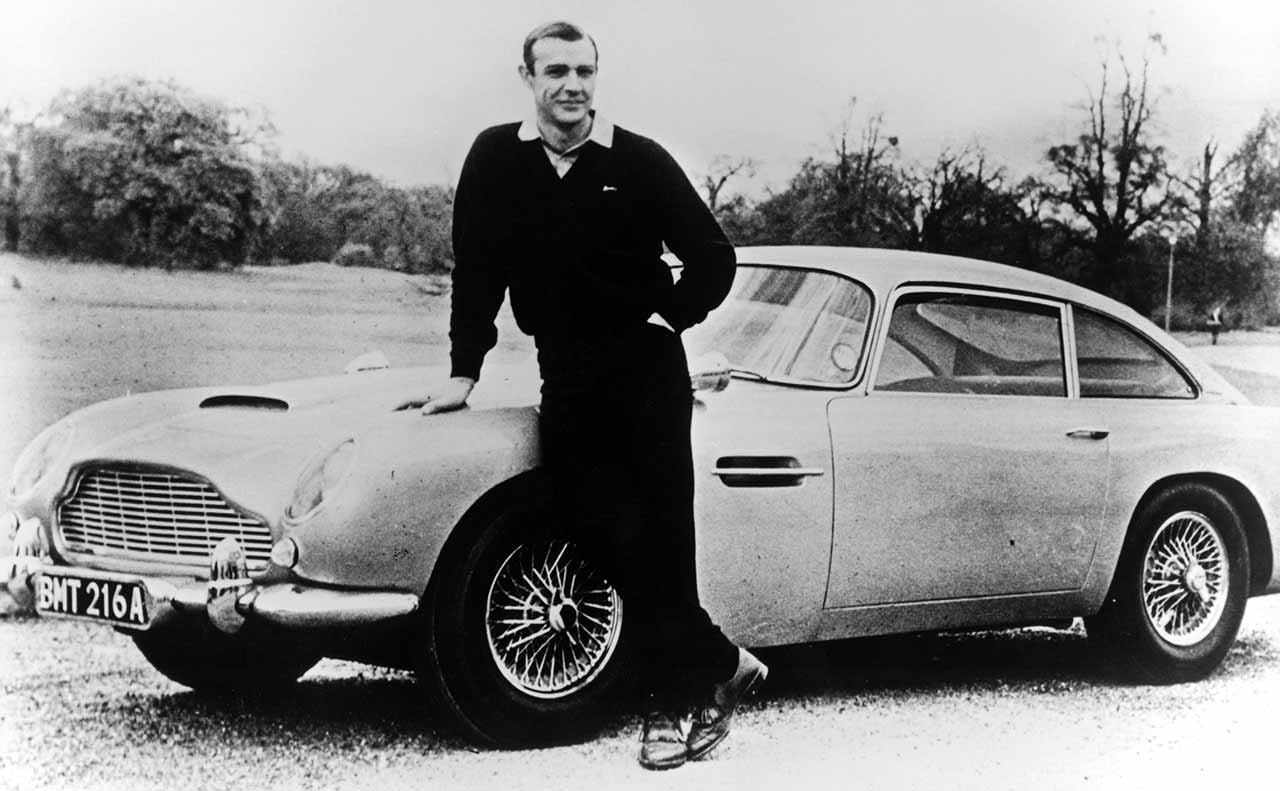
Sean Connery with Bond's first film Aston at Stoke Park golf club Aston Martin
Goldfinger proved to be a huge success, earning back its production cost in just two weeks, and the gadget-laden DB5 was a big hit. Two replica cars were built and went on a tour of America to promote the film, so in all there were four Astons involved in the Goldfinger movie. The DB5 reappeared in the pre-title sequence for the next Bond film, Thunderball, in which it uses a new gadget – a rear-facing water cannon.
Once its film duties were over DP216/1 had its gadgets removed and it was sold as just another used Aston, but later its identity was discovered and replica gadgets installed. Sotheby's sold it in 1986 for $250,000 to Florida property developer Anthony Pugliese, and for years the car made appearances at museums and events all over the world.
Then, in June 1997, it disappeared.
DP216/1 was being stored at an aircraft hangar on the Boca Raton airport. Thieves cut through the door and made off with the Aston, and Pugliese's insurance company paid out a substantial sum. The car has never been seen since.

The Goldfinger close-ups car, FMP7B, was sold at auction for £2.6 million in 2010 RM Auctions
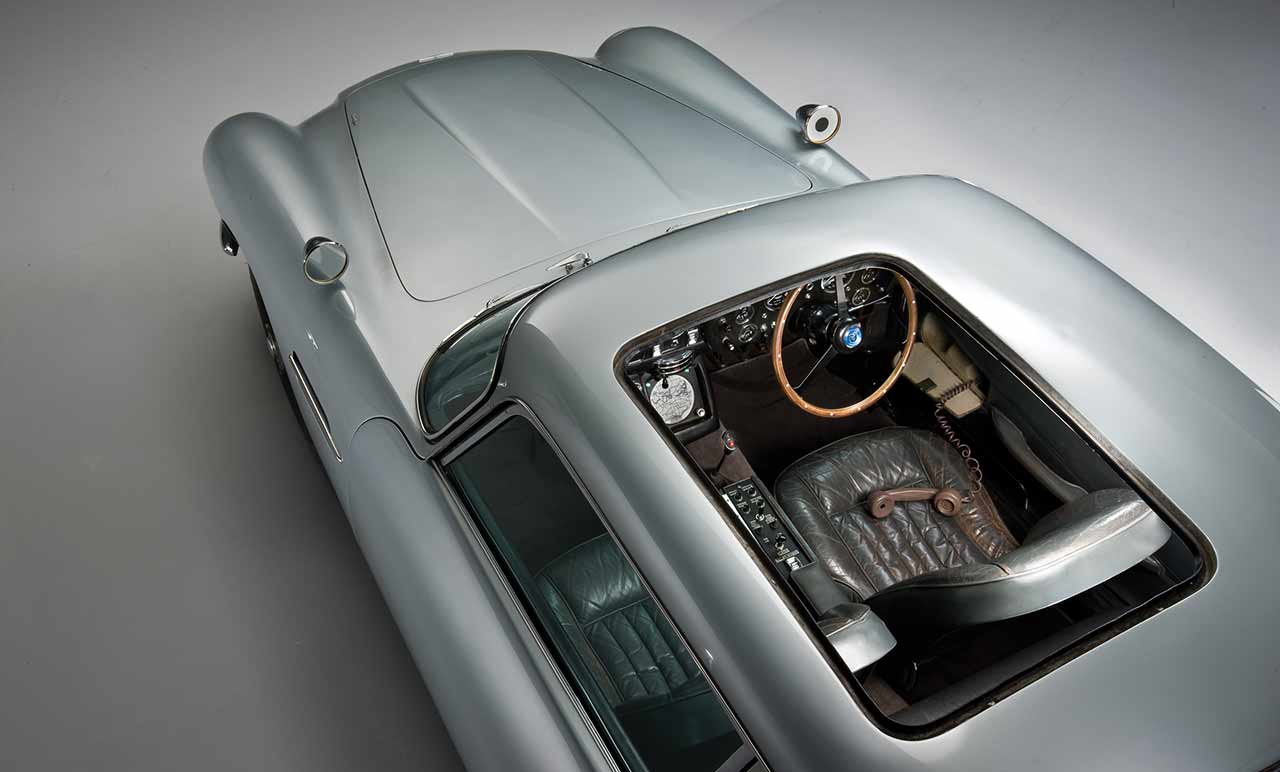
The close-ups car, FMP7B, was fitted with replica gadgets and also found a home in the US. There it stayed until 2010, when it was sold by RM Auctions in London for a (surprisingly modest) £2.6million.
DBS: new Bond, new car
Australian George Lazenby took over as James Bond for the 1969 film On Her Majesty's Secret Service, somehow convincing the producers that he could handle Bond, despite a screen career which had so far not progressed beyond advertising Fry's chocolate bars.
Lazenby's Bond was introduced in the pre-titles sequence of OHMSS, driving a new Aston that was a big departure from the cars that had gone before. The DBS traded the DB4/5/6's Italianate curves for a more chiselled, transatlantic style incorporating a controversial four-headlamp nose. It was wider than the old cars, in part because it was intended for a bigger engine – a 5.3-litre V8 designed by Aston's engine man Tadek Marek. But the new engine was delayed, so the DBS was launched with the familiar six-cylinder engine from the DB6.
The DBS's appearance in OHMSS is limited to the first few minutes and the last few, and it never appeared again in a Bond film. It has a greater screen legacy in the hands of a future Bond actor Roger Moore in the TV series The Persuaders – that car was sold at auction a few months ago.
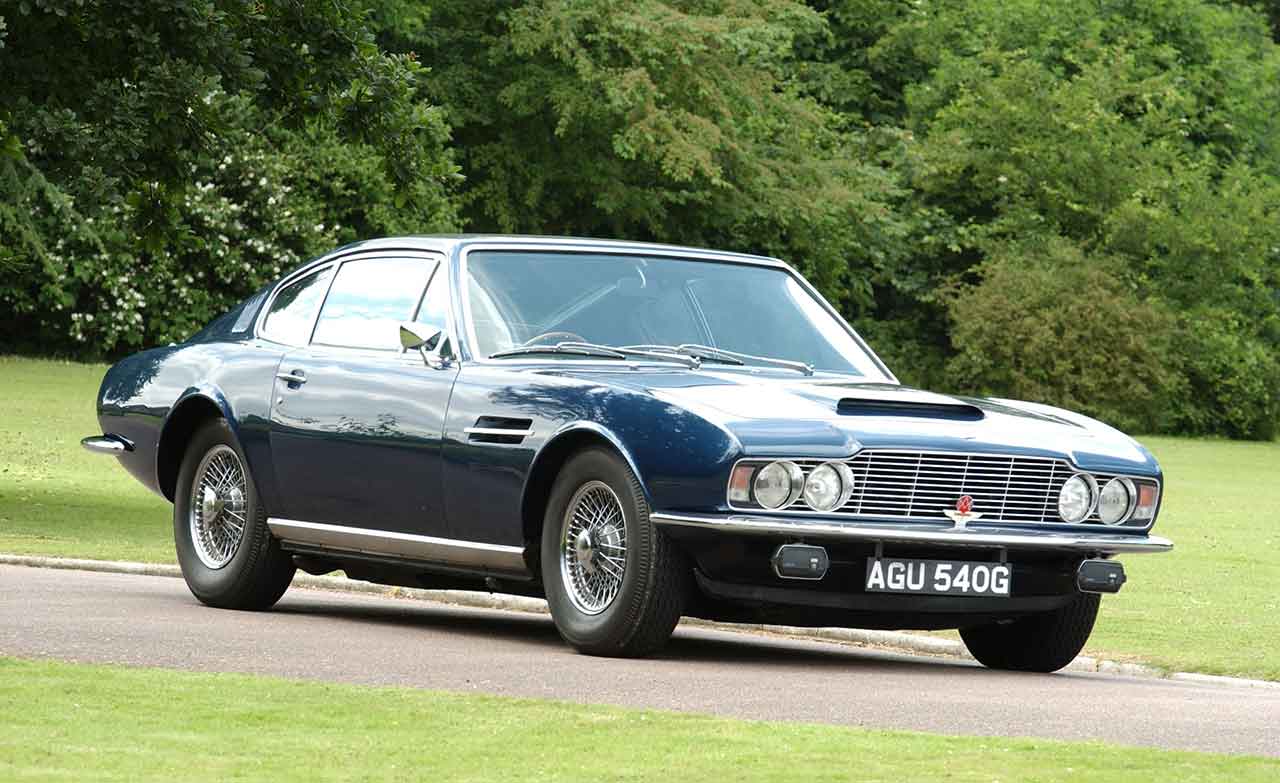
Above: In OHMSS Bond drove a DBS like this. Below: Skis important in The Living Daylights Aston Martin, Andrew Noakes

V8 Volante/Vantage: Re-booting Bond
James Bond drove other makes for the next few years, notably the submarine-capable Lotus Esprit in 1977's The Spy Who Loved Me and the explosive Esprit Turbo in For Your Eyes Only (1981). When Roger Moore's tenure as Bond ended and Timothy Dalton took over, the producers were keen to recapture some of grit of the earlier films. Getting Bond back into an Aston underlined the message that the Bond films were going back to their roots.
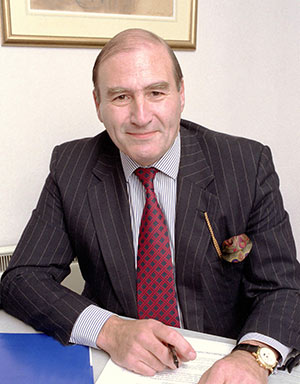 The car – or more accurately two different cars, but we'll get to that in a moment – was a descendant of the DBS in On Her Majesty's Secret Service. The Aston Martin V8 of 1987 was the DBS with the addition of the V8 engine that had always been intended to power it, plus two decades of detail modifications. The most notable change had come in 1972, when the four-lamp front end was dropped in favour of two-headlamp treatment, and David Brown's exit was marked by the dropping of the 'DB' initials.
The car – or more accurately two different cars, but we'll get to that in a moment – was a descendant of the DBS in On Her Majesty's Secret Service. The Aston Martin V8 of 1987 was the DBS with the addition of the V8 engine that had always been intended to power it, plus two decades of detail modifications. The most notable change had come in 1972, when the four-lamp front end was dropped in favour of two-headlamp treatment, and David Brown's exit was marked by the dropping of the 'DB' initials.
The V8's first appearance in The Living Daylights was in open-top Volante form. It was Aston chairman Victor Guantlett's own car, and the story is that Gauntlett (right) was offered the chance of playing a bit part as a Russian guard in the film, but turned it down. The Aston is then seen being "winterised" with the addition of a hard top, but in reality the car that appears in later scenes is a coupé. Nor is the car seen doing rocket-propelled stunts later in the film all it seems to be: those scenes were filmed with mock-ups.
DB5: second time around
The DB5 gets a second entry in this list because it was a different car, with a different registration number, that Bond used in GoldenEye (1995). In fact four new cars were built up specially for filming, and one was damaged during a sequence where Bond – now being played by Pierce Brosnan – races a Ferrari F355.
The DB5 was back in Tomorrow Never Dies in 1997, but only appeared fleetingly. While the film producers were keen to put Bond back in a modern Aston, perhaps a DB7, Aston Martin couldn't compete with the money BMW was prepared to spend to get its products in a Bond film.
A major role for a Bond Aston had to wait for a different film, and another different car.
But the DB5 wasn't finished: it was back again in "Bond 23", Skyfall. That was yet another car, hurriedly prepared at Aston Martin Works for use in filming.
Vanquish: Bond's vanishing Aston
For Die Another Day Aston Martin owner Ford put together a product placement deal with Bond film producers Eon to supply not just an Aston for James Bond to drive, but also Jaguars, Fords, and a whole lot of technical support.
Aston Martin provided three standard Vanquish road cars, which were used for close-ups and interior shots, plus four well-used prototypes which were heavily modified for stunts and special effects sequences. A key early scene sees Bond chasing a Jaguar XKR across the Vatnajökull glacier in Iceland, and for this both cars needed four-wheel drive, which was built up using Ford Explorer parts. The Vanquish's (Ford-derived) V12 engine was replaced by a 5.0-litre Ford V8 mounted as far back as possible, to make space for the driven axle and a battery of grille-mounted weapons.
In the film the Vanquish also demonstrated that it could make itself invisible, which many critics complained was stretching the bounds of credibility too far. But it may not have been as unlikely as they thought.
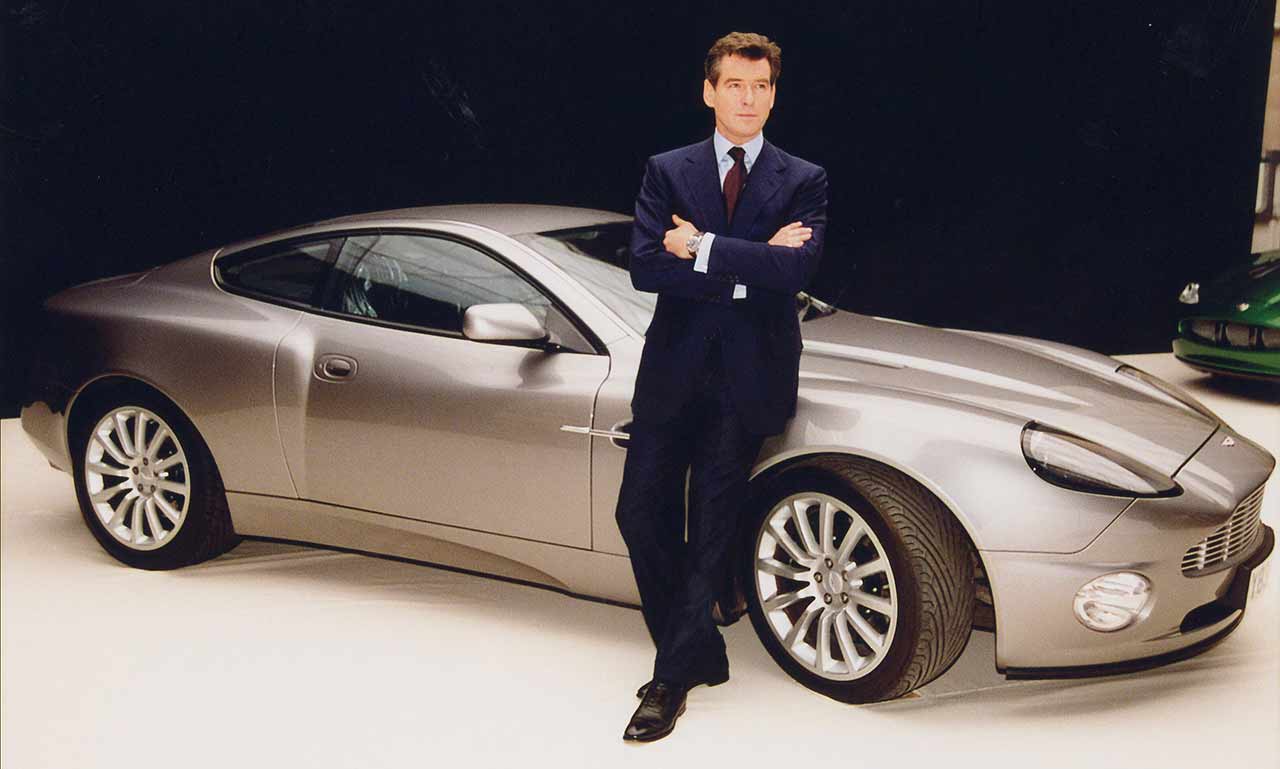
Above: Pierce Brosnan and Vanquish. Below: Stunt cars used Ford four-wheel drive systems and engines Ford
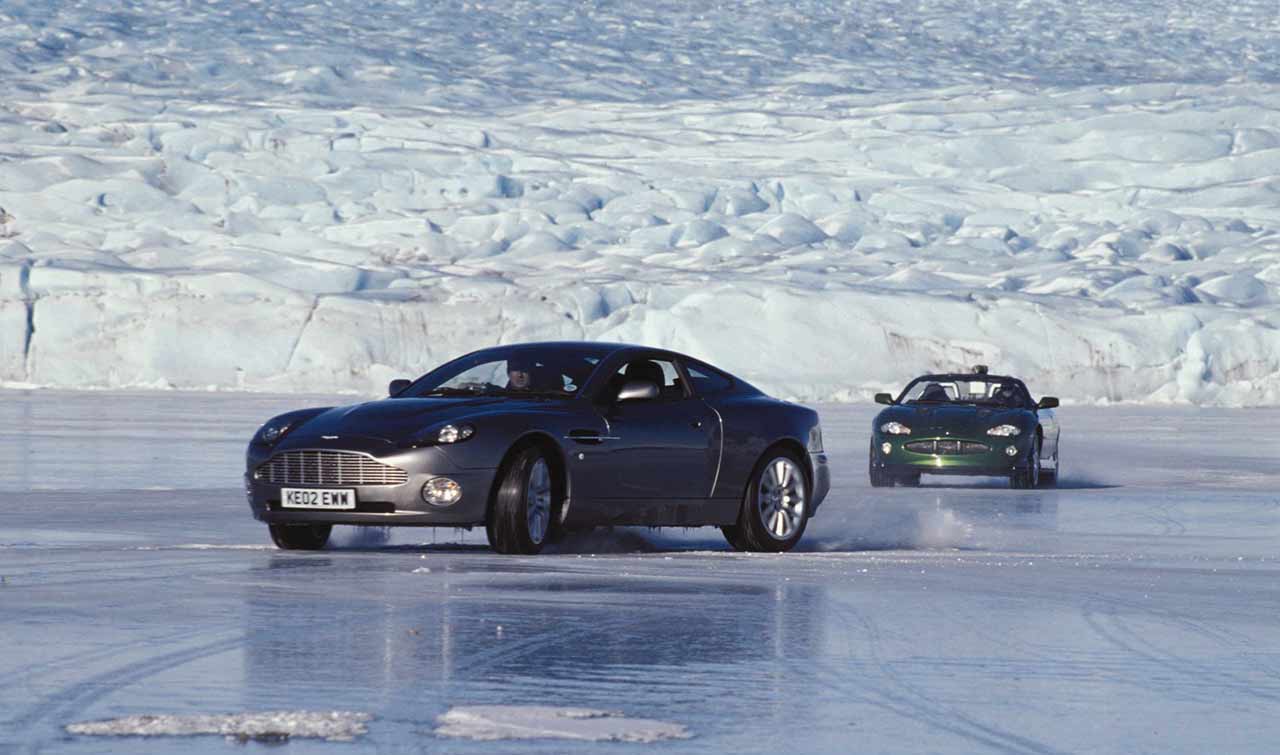
DBS: sixth Bond Aston sets a world record
Daniel Craig's first Bond film, Casino Royale released in November 2006, re-introduced 007 as a younger, less experienced agent, but there was at least one echo of the past as far as Aston Martin enthusiasts were concerned: as on so many previous occasions, Bond's Aston ended up rather worse for wear.
The car that was chosen was Aston Martin's flagship model, the DBS. Producer Barbara Broccoli was invited to view a prototype of the car and later ran a DBS of her own – chassis number 007, naturally.
Bond's DBS – in fact a DB9 dressed up to look like a DBS – met its end in a road accident. Stunt driver Adam Kirley made the car roll seven times, a world record for that kind of stunt.
The DBS returned in Quantum of Solace in 2008, where it was equally badly treated. Chased by villains in Alfa Romeos along the shores of Lake Garda in Italy, it loses a door before, naturally, Bond evades his pursuers. At least six DBSs were used in filming, one of which was written off before shooting even began – on the way to the location it left the road and ended up in the lake, though fortunately the driver was unhurt.
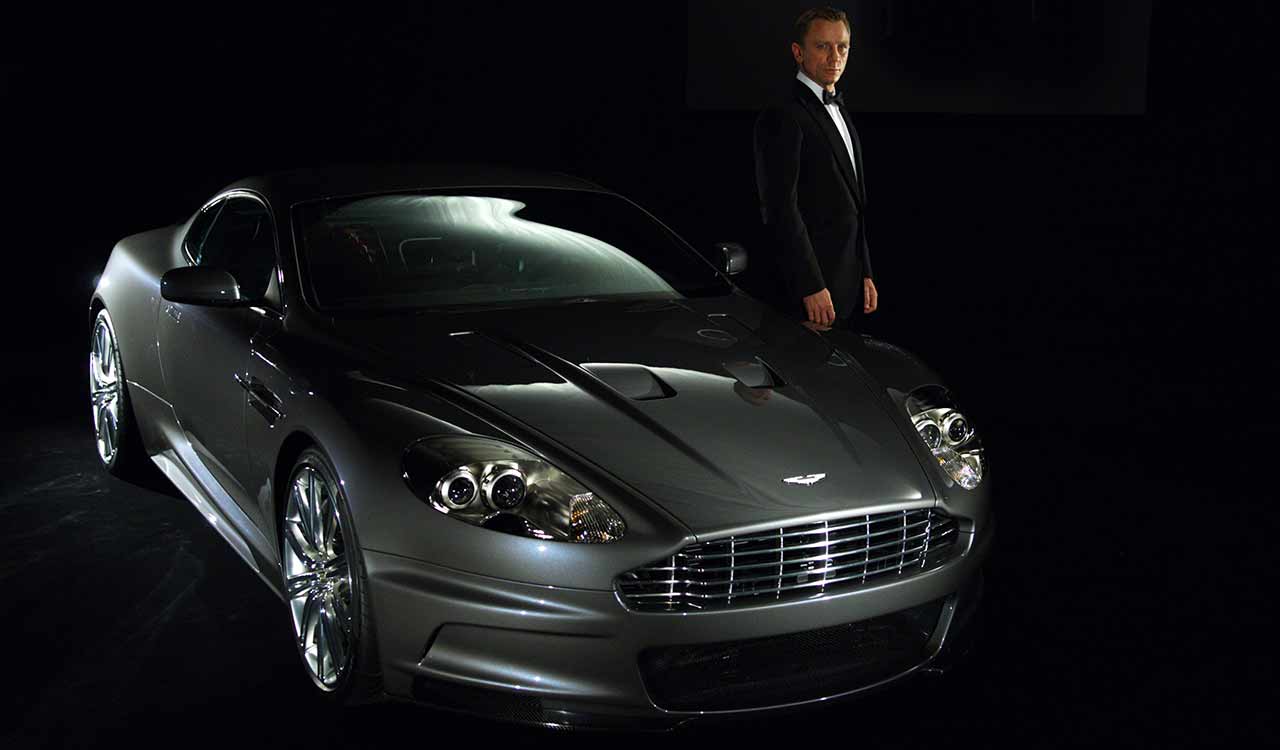
Above:DBS shiny at Casino Royale launch... Below: ...but was as badly-treated as most of 007's equipment Aston Martin

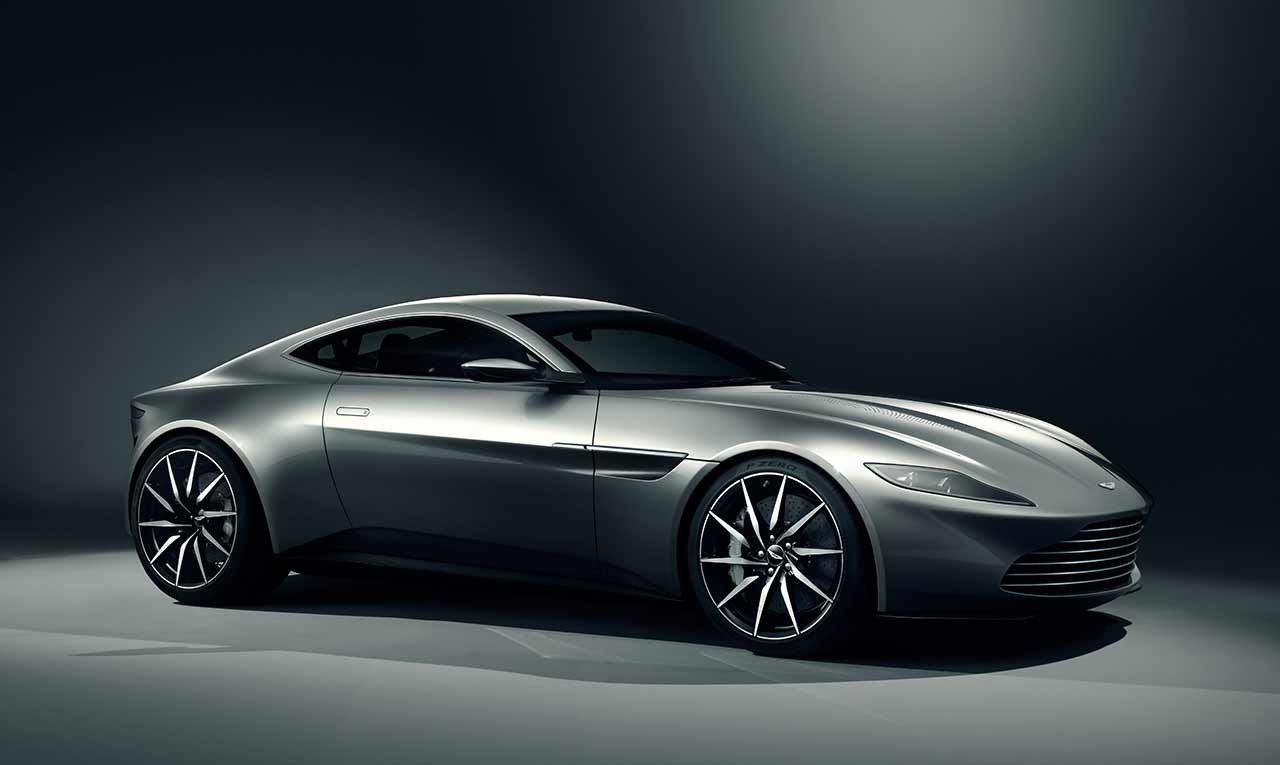
Bond's car in Spectre is the DB10, specially made for the film Aston Martin
DB10: Bond's latest Aston
Aston Martin's design team worked closely with the Spectre's director, Sam Mendes, to create the DB10 as "the ultimate car for the world’s most famous spy".
Unlike previous Bond Astons this isn't a regular production car: only 10 will be built for film and promotional use. But Aston Martin says the DB10 does give us a glimpse of "the future design direction for the next generation of Aston Martins".
Few details of the car have been released, but the DB10 appears to be based on the DB9/DBS architecture, so it will use Aston's aluminium VH platform and probably a mixture of aluminium and carbon composite outer panels. The engine will be a version of the existing 5.9-litre V12 which develops 510bhp in DBS form.
We'll get a better look at the DB10 when Spectre is released in November 2015. By then the new generation of Astons, with AMG powertrains and DB10-like design, won't be far away.
For more on the James Bond Aston Martins – and over 100 other important Aston Martins and Lagondas – see Aston Martin Model by Model.
